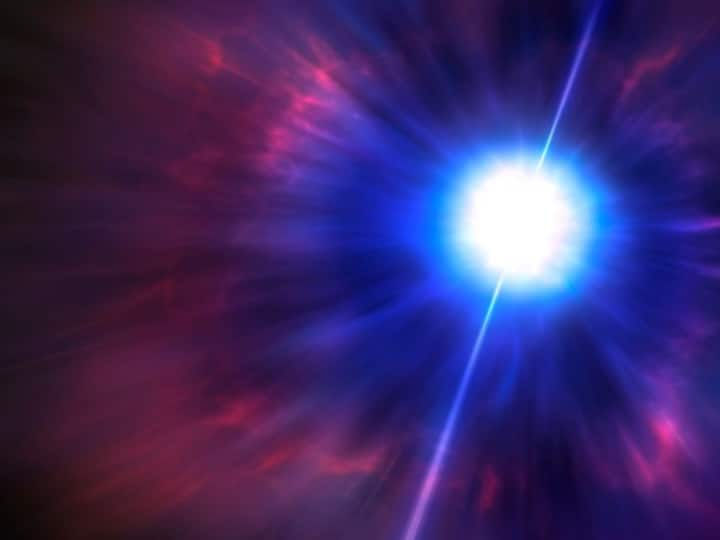
The Indian Space Research Organisation’s (ISRO’s) AstroSat has detected more than 600 gamma-ray bursts since it was commissioned in 2015. Each gamma-ray burst detected by AstroSat represents the death of a massive star or the merging of neutron stars. The Cadmium Zinc Telluride Imager (CZTI) onboard AstroSat detected the gamma-ray bursts, news agency PTI reported. AstroSat is the first Indian satellite fully dedicated to the study of astronomy.
Quoting Dipankar Bhattacharya, the principal investigator for CZTI, a PTI report said that the detection of the 600th gamma-ray burst is a great demonstration of the continued undiminished performance of CZTI eight years after launch, and well after its design lifetime.
MUST READ | Science For Everyone: How Antimicrobial Resistance Impacts Agriculture, Its Effect On Humans, And What Must Be Done
AstroSat had a design life of five years, but it continued to be in good health.
Gaurav Waratkar from IIT Bombay, who leads the study of gamma-ray bursts with AstroSat, told PTI that gamma-ray bursts, also called mini big bangs, are the most energetic explosions in the universe, and emit more energy in seconds than the Sun will emit in its entire lifetime.
MUST READ | Antibiotic Use Linked With Increased Risk Of Heart Attack And Stroke In Women. Here’s Why
Interesting facts about gamma-ray bursts
Gamma-ray bursts are divided into two classes, namely short and long. Short gamma-ray bursts are the ones with durations less than two seconds. Earlier, researchers believed that short and long gamma-ray bursts must have different origins.
However, a nearby, long-duration gamma-ray burst that hit Earth provided new insights into the mysteries of the cosmos, according to a study published in December last year. Astrophysicists believed for nearly two decades that long gamma-ray bursts resulted solely from the collapse of massive stars, but the study overturned this belief.
MUST READ | Triple Drug Combinations, Stem Cell Therapy — Science Advances And Potential Treatments For COPD In Future
Earlier, neutron star mergers were believed to produce only short gamma-ray bursts, but the study found that neutron star mergers can produce some long gamma-ray bursts as well.
A neutron star is formed when a massive star runs out of fuel and collapses. When two neutron stars merge, a strong emission of gravitational waves occurs, along with electromagnetic waves covering the entire spectrum, from gamma-rays to radio.
MUST READ | Air Pollution Increases Risk Of Cancers Of The Neck, Especially Throat. Here’s How, And Who Is At Greater Risk
An intense pulse of gamma-ray radiation swept through the solar system on October 9, 2022, triggering gamma-ray detectors on numerous orbiting satellites, and spacecraft. The radiation was so bright that astronomers decided to study the event using the most powerful telescopes in the world. The cosmic explosion, named GRB 221009A for its discovery date, is the brightest gamma-ray burst ever recorded.
AstroSat made its 600th gamma-ray burst detection on November 22.
AstroSat-2 is the successor to AstroSat. AstroSat-2 is India’s second space observatory mission. The launch date of AstroSat-2 is yet to be announced.
MUST READ | Missing World War II Pilot Located After 8 Decades By Forensic Scientists
